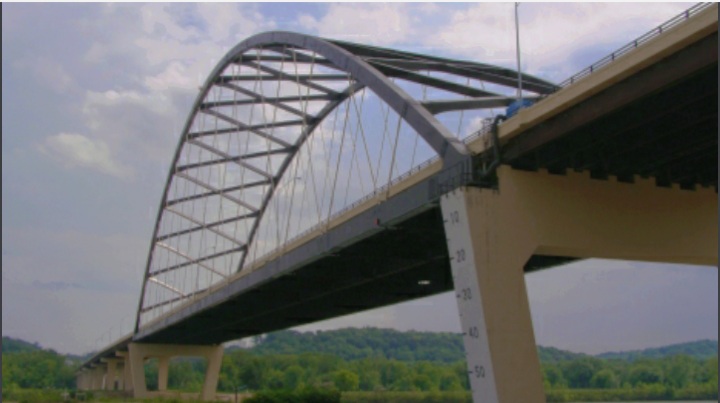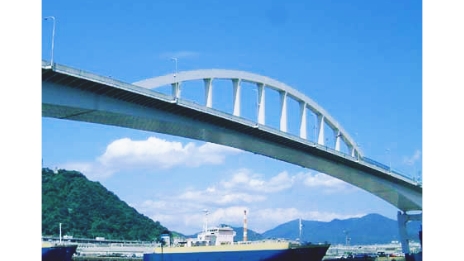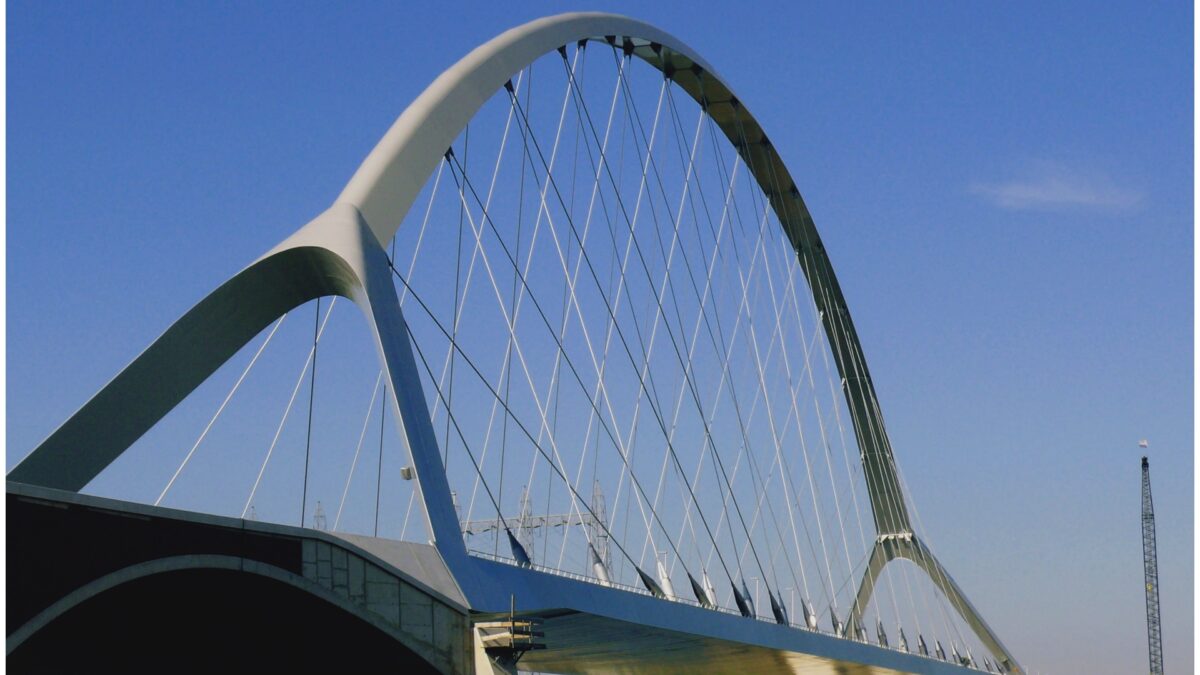Table of Contents
What Is Tied Arch Bridge?
A tied arch bridge, also known as a bowstring arch bridge or a bowstring girder bridge, is a type of bridge that features an arch structure supported by a tie between the ends of the arch.
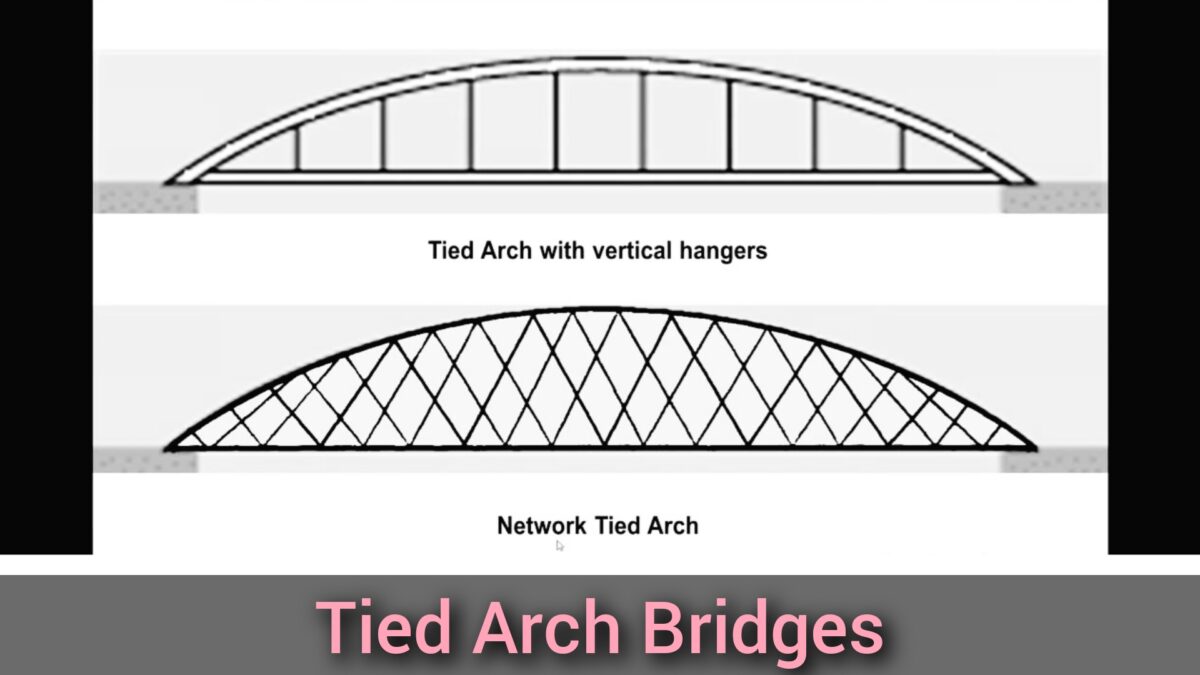
The arch carries the weight of the bridge deck and any loads acting on it, while the outward horizontal forces of the arch caused by tension at the arch ends are countered by equal tension of its own gravity plus any element of the total deck structure that provides support.
The arches in a tied arch bridge have strengthened chords that run to a strong part of the deck structure or to independent tie-rods located below the arch ends, further enhancing the structural stability. This design allows for longer spans and reduces the need for additional vertical supports, making tied arch bridges visually appealing and efficient for spanning large distances.
Tied arch bridges can be constructed using various materials, such as steel, concrete, or a combination of both. They are commonly used in both road and railway bridge applications, offering aesthetic versatility with different arch shapes and variations in the tie configuration.
Concept Of Tied Arch Bridge
Thrusts exerted in a downward direction on a tied-arch bridge deck are converted into tension forces, which are then transmitted through vertical ties connecting the deck to the arch. These tension forces serve to flatten the arch and consequently push its tips outward towards the abutments, similar to other types of arch bridges.
Nevertheless, in the case of a tied-arch or bowstring bridge, these movements are not restrained by the abutments themselves but rather by a reinforced chord that binds the tips together. This chord absorbs the tension forces, much like the string of a bow being flattened. Consequently, this design is commonly referred to as a bowstring-arch or bowstring-girder bridge.
The advantage of tied-arch bridges lies in the fact that the horizontal forces at the abutments are eliminated. As a result, these bridges can be constructed with less substantial foundations, allowing for their placement on elevated piers or in areas with unstable soil conditions. Furthermore, since the structural integrity of tied-arch bridges does not depend on horizontal compression forces, they can be prefabricated offsite and subsequently transported, floated, hauled, or lifted into position.
Both tied-arch bridges and self-anchored suspension bridges exert solely vertical loads on the anchorage points, making them particularly suitable in situations where anchoring large horizontal forces is challenging.
Purpose Of Tied Arch Bridge
The purpose of a tied arch bridge is to provide a stable and efficient structure for spanning large distances while accommodating various loads and environmental conditions. Tied arch bridges are characterized by their distinctive arch shape, where the arch ribs are connected to the deck by tension members called tie bars or hangers.
The primary purposes of tied arch bridges are:
- Structural Stability: Tied arch bridges are designed to resist the compressive forces generated by the weight of the bridge deck and the loads it carries. The arch shape efficiently transfers these forces to the abutments or supporting piers, creating a stable structure.
- Spanning Large Distances: Tied arch bridges are capable of spanning relatively long distances without the need for intermediate supports. This makes them suitable for crossing wide rivers, valleys, or other obstacles where a clear span is desired.
- Aesthetic Appeal: Tied arch bridges are often chosen for their aesthetic qualities. The arch shape adds a visually appealing element to the bridge design, creating an iconic landmark or enhancing the surrounding landscape.
- Structural Flexibility: Tied arch bridges can accommodate movements caused by thermal expansion, settlement, and seismic activity. The flexibility of the tied arch design helps to distribute the loads and stresses more evenly, reducing the potential for damage and ensuring long-term structural integrity.
- Versatility: Tied arch bridges can be constructed using various materials, such as steel, concrete, or a combination of both. This flexibility allows engineers to select the most appropriate materials based on factors such as cost, construction methods, and anticipated loads.
Structural Performance Of Tied Arch Bridge
See the below figure for structural performance of tied arch bridge.
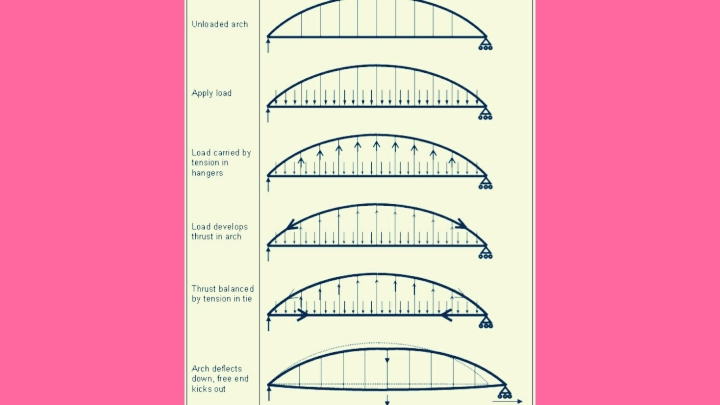
Advantages of Tied Arch Bridges:
Tied arch bridges can be constructed using a variety of materials such as concrete, steel, stones, and bricks, which enhances their resistance to failure.
The arch design of tied arch bridges allows the forces exerted on the bridge deck to be transmitted to the arches through hangers. This distribution of forces ensures that no single part of the bridge experiences excessive pressure. The half-circle design also prevents deformations caused by bending, further enhancing its strength.
Tied arch bridges efficiently distribute the forces generated by moving loads to the arches, which evenly disperses the loads to both ends of the bridge. As a result, the middle section of the bridge experiences reduced force, contributing to its overall strength compared to other traditional bridge types.
Arch bridges are designed to compress, which means that with increased usage, they actually become stronger over time.
Disadvantages of Tied Arch Bridges:
Tied arch bridges are not economically efficient due to their specific construction requirements and the variety of materials needed for their construction.
To ensure optimal stability of the hangers and arches, tied arch bridges necessitate regular maintenance efforts.
Tied arch bridges have certain limitations on their size, as larger spans may require alternative bridge designs.
The construction of tied arch bridges generally takes a longer time compared to other conventional bridge types due to their intricate design and construction requirements.
The stability of a tied arch bridge relies heavily on the integrity of its hangers. If a single hanger breaks, it poses a risk to the overall stability of the entire structure.
Tied Arch Bridge Examples
